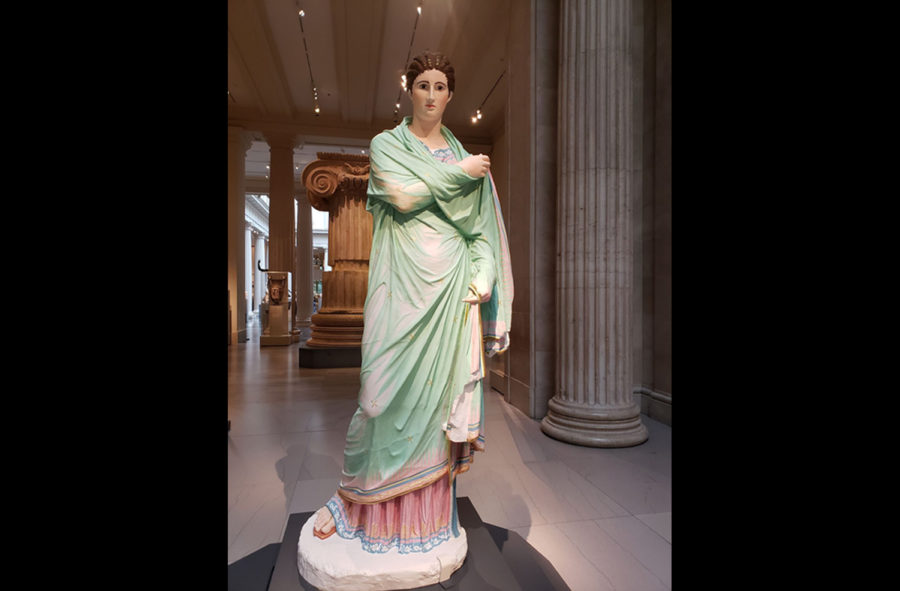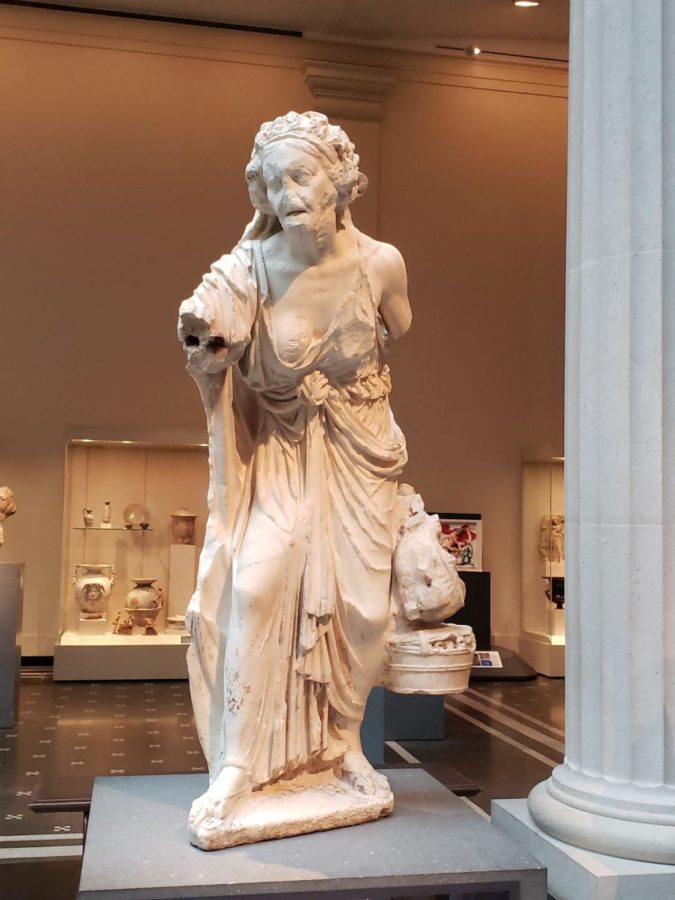Multicolor Marble and More: ‘Chroma: Ancient Sculpture in Color’ at The Met Museum
This exhibition at The Met brings color to the marble statues of ancient Greece and Rome and analyzes the history of polychromy in sculptures.
Here is the polychromy reproduction of ‘Small Herculean Woman,’ depicting a woman in a sheer teal shawl. Her gaze follows the viewer with a solemn expression.
After a quick visit to the ticket booth and listening to a lady mumbling through a glass divider, who asked for my student I.D. card, I was off to the Greek and Roman collection of the Metropolitan Museum of Art. As I stepped through the columns that divided the grand and exquisite rooms, I entered one of the most prominent collections at The Met Museum.
Formally established at The Met in 1909, the Museum’s Greek and Roman art collection has been a marble haven of knowledge and beauty that spans a wide variety of classical sculpture, documenting many facets of Greek and Roman life, known as the classical art period. This collection is a pride of The Met, classical art itself has yet to lose the novelty and appeal of its art even after centuries. However, ever since a new exhibit entered the stage of the west wing, color has infiltrated the lustrous white statues and calming lights. Now, colored replicas of certain statues stand alongside their original renowned sculptures, utilizing their color to inform the public of a less-discussed history.
One of the lesser-known facets of the classical art period is that many sculptures that now appear as white with varying degrees of shady gray were actually once colorfully painted. Known as polychromy, this practice decorates sculpture primarily of the classical period with a variety of colors, in order to bring a more lifelike presence to still objects and to highlight the details within these sculptures.
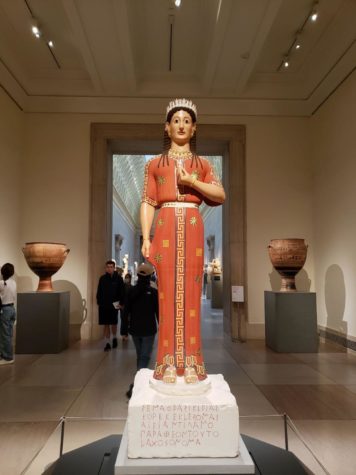
These colorful reconstructions seek to display the detail within the originals. My first glimpse at polychromy in classical sculpture was when I met Phrasikleia, or at least her funerary stele. She was a woman who died young, before she could marry, and her funerary stele was made by a famous sculptor of the time, Aristion of Paros. Tulips adorning her hair and an ornately designed dress are accentuated by the contrasting color and gold foil placed delicately on her statue. When viewing this piece through a historical lens, it is clear why her creator would want to use polychromy to further highlight her magnificence. Creators and critics in modern society, however, hold vastly different views. Many critics have commented that vibrant color does nothing to help the classical sculptures —if anything, it is “garish,” as The New York Times critic Zachard Small put it, in an analysis of this exhibition.
None of this discussion could be explored, however, without the individuals who work behind the scenes to bring these exhibits to life. Prominently, Dr. Vinzenz Brinkmann, Head of the Department of Antiquity at the Liebieghaus Skulpturensammlung in Frankfurt, Germany, and Dr. Ulrike Koch-Brinkmann, restorer, are archaeologists who have dedicated over forty years to the study of polychromy in classical sculpture, helping to produce countless reproductions. Recently, they, alongside The Met team, created a reconstruction of the Sphinx finial featured in Chroma.
The specific techniques used to answer the mysterious question behind the original colors of the sculptures include multispectral photography, X-ray diffraction, and other methods. The different materials used for different sculptures require both traditional and innovative techniques, such as ultraviolet-visible absorption spectroscopy and thermography. It is safe to say that it took an incredible amount of research and time to bring the reconstructions to life properly. In fact, ‘Chroma: Ancient Sculpture in Color’ took almost two decades to complete.
While polychromy is generally acknowledged within archaeological groups, there is much debate surrounding its use in ancient sculpture, such as how polychromy came about and how much it was used. It is important to acknowledge that there can be personal biases in decisions made about the legitimacy of reconstructions, which affect the accuracy of history on a large scale.
Another factor that many critics question is whether these ancient practices translate to a modern era. In terms of authenticity, it is simply impossible to recreate sculptures precisely as if they were brand new. But as time passes, new and more advanced techniques for recreating, painting, and preserving sculptures are discovered — all of which aim to make recreations as accurate as possible. As stated in the The Met’s overview of the exhibit, “Recent reconstructions are 3-D printed in crystalline acrylic glass (polymethyl methacrylate), covered with thin marble plaster, and painted in tempera (by Koch-Brinkmann) with traditional pigments and historically accurate binders.”
This method of reconstruction has been criticized for straying from ancient practices. Within the Bronx Science community, Art History teacher Mr. Giorgis-Blessent noted that it is important to look at historical accuracy along with the experimental error. While Chroma is an amazing exhibit that showcases history, there are still questions of accuracy that arise when examined more closely. Mr. Blessent emphasizes that there are factors that undeniably make the painted reconstructions different from their originals.
Aside from the technical opinions that surround polychromy discourse, there are also opinions based solely on appearance. Some prefer the fair and gleaming statues, having grown up familiarized with the white marble that ancient Greeks and Romans carved their art with. As art historian Fabio Barry, told The New Yorker, “The various scholars reconstructing the polychromy of statuary always seemed to resort to the most saturated hue of the color they had detected … that the traditional idea of all-whiteness was so cherished that they were going to really make their point that it was colorful.”
During the Renaissance, the rediscovery of Classical art and Greek and Roman culture made significant impacts, reintroducing the philosophies, culture, and art of the time period. Specifically regarding art, archaeologists of the time found realistic sculptures from the classical period. As a result, artists began practicing the techniques used in ancient Greece and Rome and improved these methods with new technologies.
However, there was one vital piece of most sculptures missing: the color. After centuries of laying in ruin, time made its mark on the sculptures. Subsequently, most of the vibrant colors were lost, leaving only dirtied traces.
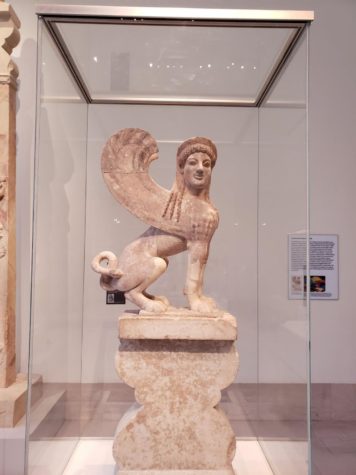
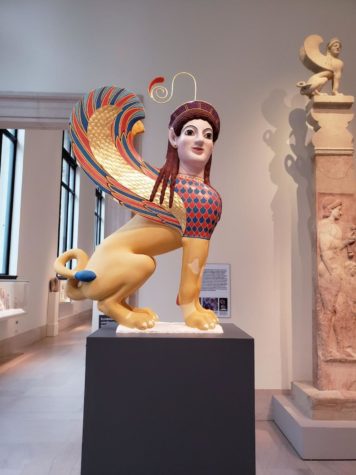
The falsehood that Greek and Roman sculptures were originally plain began to spread as more barren marble was unearthed. Over time, this concept perpetuated the idea that their whiteness indicated a certain amount of purity. The idealism of whiteness in Europe then became associated with Greek and Roman sculpture, and anything less than white on sculpture was seen as ‘impure.’ There is even evidence, from excavations and museums (before newly found sculptures were displayed), that the statues had been scrubbed of any leftover pigments, leaving only marble.
While it is acceptable to think of white marble sculptures as beautiful and elegant, it is intolerable to erase the history of polychromy within classical art.
It is dangerous to equate whiteness to Greek and Roman society. Both cultures, at their height, spanned thousands of miles and were extremely culturally diverse. As these civilizations were considered to be the cornerstone of modern Western civilization, many white supremacists and far right groups have tried to diminish or deny the findings of polychromy in sculpture. Luckily, more exhibits on polychromy are now being created, fueling an increased public interest for this subject. Overall, this helps to combat the misrepresentation that has existed for centuries in museums.
First impressions are an important factor for any person, event, or in this case, exhibit. The Met gives viewers a substantial first impression — with dozens of colorful hand-crafted sculptures, it is easy to feel immersed in the newly rediscovered history of polychromy.
This exhibit at The Met opened on July 5, 2022 and closes on March 26, 2023, so be sure to check it out before it moves on to other halls. Unlike the everlasting marble that has become the trademark of classical sculpture, this exhibit is wearing as fast as ancient paint.
While it is acceptable to think of white marble sculptures as beautiful and elegant, it is intolerable to erase the history of polychromy within classical art.
Dara King is a Copy Chief for ‘The Science Survey.’ She loves the creative and intellectual opportunity that journalism can provide and the connection...

